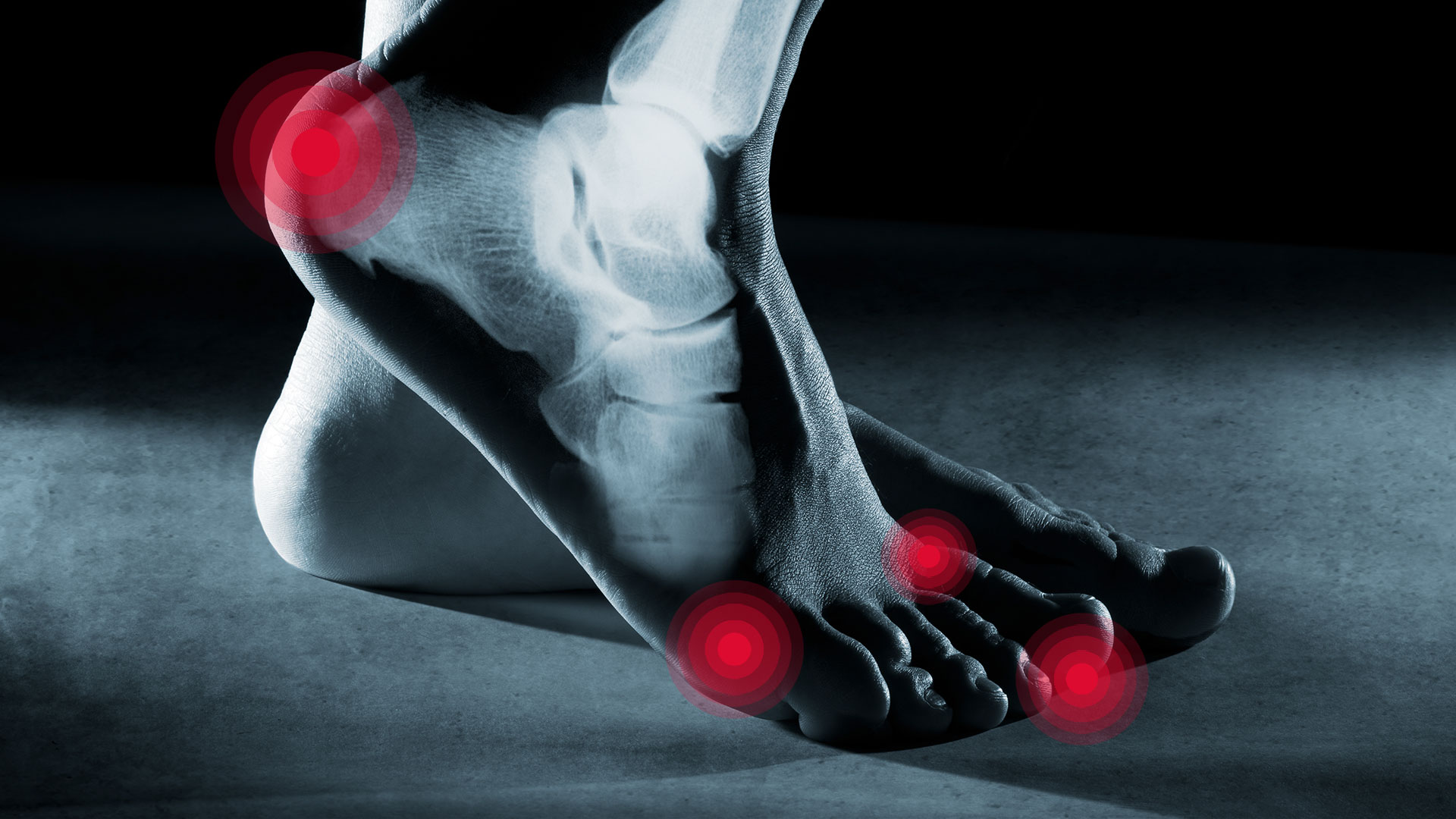NO SWEAT, NO GLORY?
No sweat, no glory? Maybe. However, sweaty feet are not particularly pleasant. Especially when you wear your shoes for eight hours or more and don’t see any way to air the “cheesy feet”. The feet get tired, every step feels heavy. Concentration levels drop, there is an increased risk of missteps.
And then there’s the hygiene element. Sweat does not smell. However, a shoe in which the feet heat up like a tropical house is an ideal breeding ground for bacteria. These decompose the sweat and butyric acid is produced, which we perceive as a pungent smell. The result is “cheese foot” – usually accompanied by painful blisters. However, what sounds so harmless is a torment for some sufferers. Persons affected feel constant feelings of shame and their self-confidence suffers massively. But these are extreme cases. Everybody sweats, especially in the sweaty summer months. No wonder: the soles of the feet have the most sweat glands per square centimetre. No other region of your body can match that density. Not even your armpits.
The good news is that you are by no means helpless against these sweat glands. There are several measures that can help you reduce perspiration. Here are our tips for a fresher foot climate. But before we get started, we have an important note: As we said, everyone sweats. Some people less, others more. If extreme sweating cannot be contained and attributed to circumstances such as intense heat, a trip to the doctor is advisable. In some cases, it can be a symptom of a serious medical condition.
WASH FEET REGULARLY
Tip no. 1 is obvious: If you don’t want your feet to smell, you should wash them regularly. Regularly doesn’t mean two or three times a week, but every morning. Wash and dry thoroughly. Also between the toes, so that no residual moisture remains. A warm and humid environment allows the athlete’s foot to spread. The moisture causes the skin to swell and bacteria can penetrate the skin more easily.
PAY ATTENTION TO YOUR CHOICE OF SOCKS
This tip also sounds like advice from mom: change socks daily and wash them regularly. Washing is a basic requirement to ensure that you have a fresh pair of socks in your wardrobe. Damp socks are – you guessed it – also a cosy breeding ground for bacteria. But the material and fit of the socks are also crucial. Socks with a high proportion of synthetic fibres are more durable and less absorbent than natural fibres, as they do not store moisture caused by perspiration but wick it away to the outside. Socks made of 100 percent wool, on the other hand, are “absorbent” but only release moisture slightly.
Take a look at our breathable work socks like the Perfect Fit Sock – they are made from skin-friendly materials and fit the foot comfortably thanks to the pressure-free cuff. It is important that your socks fit well and do not “wobble” on your feet, as ill-fitting socks create friction and additional heat in the shoe.
GIVE SHOES A (DRY) BREAK
Even shoes need a break sometimes. Over the course of the day, a person sweats out up to half a litre of moisture through their feet. The residual moisture that remains in the shoe at the end of a long, sweaty working day does not usually dry overnight. It is therefore advisable to wear safety shoes in rotation. When you give your shoes a break, you should also remove the insoles and let them dry separately. It is also advisable to change the insoles regularly. You can use the THERM-IC Refresher in the shoe so that completely soaked shoes are ready for use again in a few hours. The shoe dryer dries the shoes efficiently and gently. UV light reduces bacteria and germs that could cause unpleasant odours.
CHOOSE THE RIGHT SAFETY SHOES
As we all know, you can’t always rely on the weather forecast. If you foresee that your working day is going to be another sweaty one – because you work in production facilities that heat up quickly, for example – it’s worth thinking about very airy footwear. If you are on duty in dry work areas, then safety sandals are worth considering. Or perforated shoes. These are shoes with holes in the side for extra cooling. The BREEZER model is an example of a perforated safety shoe.
If you work outdoors, then safety shoes with a GORE-TEX® membrane are suitable. Such a membrane ensures that rain and moisture from the outside do not penetrate the shoe. By its very nature, it is designed to allow moisture to evaporate from the inside. Read about how the principle works in this blog post. Whichever model you choose, the general rule is that the shoe should always fit well. Ill-fitting and/or too large shoes slip back and forth on the foot. Which is already problematic for health and safety reasons. At the same time, friction and thus avoidable heat are generated in the shoe.
MAINTAIN BREATHABILITY WITH THE NECESSARY CARE
Breathable shoes allow your feet to breathe – but only in the long term if you give them a little care now and then. If the shoe becomes too dirty on the outside, this can lead to its upper material (leather or textile) or its climate membrane being restricted in its breathability. The dirt acts as an impermeable shield. It is better to use the brush once too often than too little. Shoes should be disinfected inside about once a week. This kills the culprits producing butyric acid. We have compiled some more tips and tricks for safety shoe care.












Comments (0)